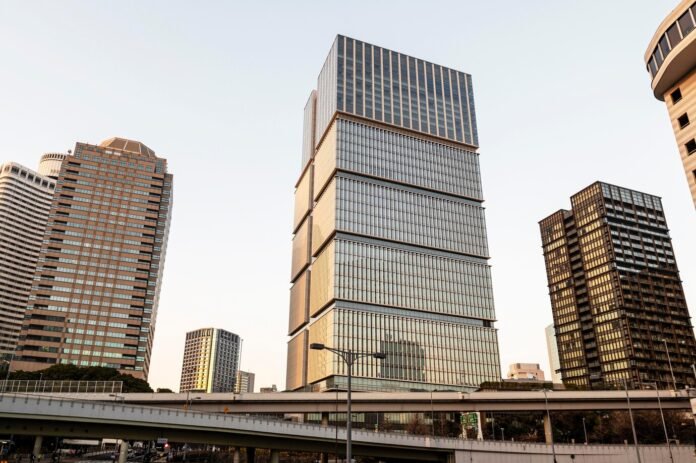Introduction:
In the ever-evolving landscape of urban development, the concept of a single business tower has emerged as a symbol of modernity, efficiency, and architectural brilliance. These towering structures are not just office spaces; they are self-contained ecosystems that cater to the diverse needs of businesses, employees, and the environment. From cutting-edge technology to sustainable design, single business towers are redefining the way we perceive workspaces. This article delves into the various aspects of single business towers, exploring their design, functionality, and impact on the urban environment.
1. Architectural Marvel: The Design of Single Business Towers
The design of a single business tower is a testament to human ingenuity and creativity. Architects and engineers collaborate to create structures that are not only visually stunning but also highly functional. These towers often feature sleek, modern exteriors with glass facades that reflect the skyline, giving them a futuristic appeal. The interior design is equally impressive, with open-plan offices, ergonomic workstations, and communal spaces that foster collaboration and innovation. The use of natural light, green spaces, and sustainable materials further enhances the aesthetic and environmental appeal of these towers.
2. Technological Integration: Smart Buildings for Smart Businesses
Single business towers are at the forefront of technological innovation. They are equipped with state-of-the-art systems that optimize energy consumption, security, and communication. Smart lighting, climate control, and automated elevators are just a few examples of the technology integrated into these buildings. Additionally, advanced IT infrastructure ensures seamless connectivity, enabling businesses to operate efficiently in a digital-first world. The integration of IoT (Internet of Things) devices allows for real-time monitoring and management of building operations, making these towers not just smart but also highly adaptive to the needs of their occupants.
3. Sustainability: Green Towers for a Greener Future
Sustainability is a core principle in the design and operation of single business towers. These buildings are often constructed with eco-friendly materials and incorporate energy-efficient systems to minimize their carbon footprint. Features such as solar panels, rainwater harvesting, and waste recycling systems are commonly found in these towers. Moreover, the inclusion of green spaces, such as rooftop gardens and indoor plants, contributes to improved air quality and overall well-being. By prioritizing sustainability, single business towers are setting a new standard for environmentally responsible urban development.
4. Economic Impact: Boosting Local and Global Economies
Single business towers play a significant role in driving economic growth. They attract multinational corporations, startups, and small businesses, creating a vibrant business ecosystem within a single location. This concentration of businesses fosters collaboration, innovation, and economic activity, benefiting both the local and global economies. Additionally, the construction and maintenance of these towers generate employment opportunities, further contributing to economic development. The presence of a single business tower can also enhance the value of surrounding properties, making it a catalyst for urban regeneration.
5. Social Dynamics: Creating Communities Within Towers
Beyond their economic and environmental impact, single business towers also influence social dynamics. These buildings are designed to be more than just workplaces; they are communities in themselves. With amenities such as gyms, cafes, conference centers, and even childcare facilities, single business towers cater to the diverse needs of their occupants. This creates a sense of belonging and encourages social interaction among employees, fostering a positive work culture. The communal spaces within these towers also serve as venues for networking events, workshops, and seminars, further enhancing the social fabric of the business community.
6. Challenges and Future Prospects: The Road Ahead for Single Business Towers
Despite their numerous advantages, single business towers are not without challenges. The high cost of construction and maintenance, as well as the need for continuous technological upgrades, can be daunting. Additionally, the concentration of businesses in a single location may lead to issues such as overcrowding and increased competition for resources. However, with advancements in technology and a growing emphasis on sustainability, the future of single business towers looks promising. As urban populations continue to grow, these towers will play an increasingly important role in shaping the cities of tomorrow.
Conclusion:
Single business towers are more than just architectural feats; they are dynamic spaces that integrate technology, sustainability, and community. As urban centers continue to expand, these towers will become essential in accommodating the needs of businesses and individuals alike. By balancing functionality with environmental responsibility, single business towers are paving the way for a more sustainable and interconnected future. Whether you are an architect, a business leader, or simply an admirer of modern urban design, the rise of single business towers is a phenomenon worth watching.


